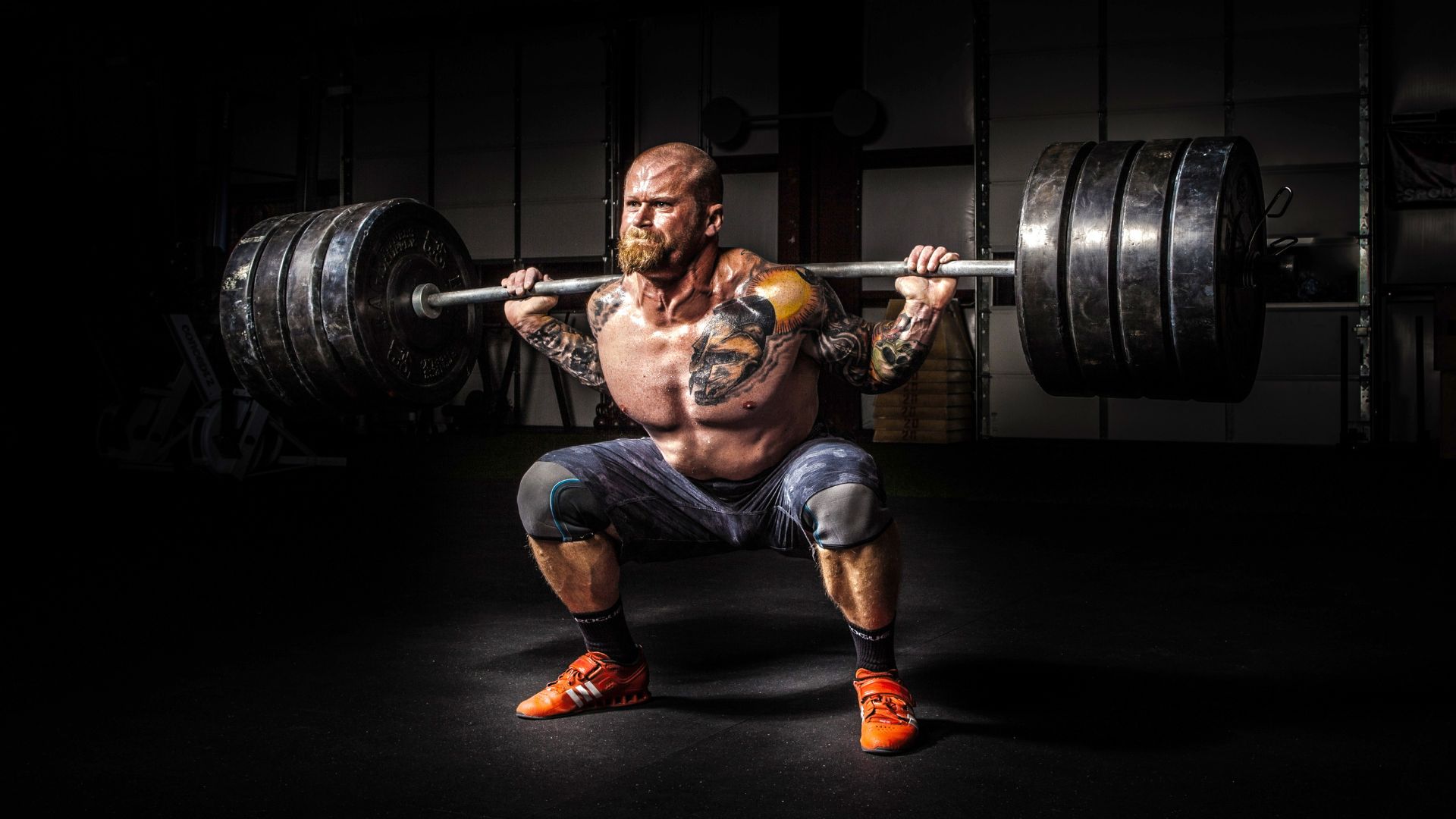Ready to take your back squat game to the next level? One of the most common questions among lifters is how much weight to use when doing a back squat.
While there’s no one-size-fits-all answer, we’ve done the research and gathered some expert advice to help you determine the ideal weight for your fitness level and goals.
So, get ready to pump up those quads and glutes, as we dive into the world of back squatting!
The amount of weight to use when doing a back squat varies based on individual fitness level and body weight. However, an untrained person who weighs 114 pounds should aim for a one-rep max of 55 pounds, while an advanced person who weighs the same should aim for a one-rep max of 150 pounds. For a person who weighs 148 pounds, an untrained person should aim for a one-rep max of 65 pounds, while an advanced person should aim for a one-rep max of 190 pounds. It is recommended to consult with a trainer or coach for personalized recommendations.
The amount of weight to use varies based on individual fitness level and body weight.
When it comes to weightlifting, there is no one-size-fits-all approach. The amount of weight to use when doing a back squat varies based on individual fitness level and body weight.
Someone who is just starting out with weightlifting and has never done a back squat before will likely need to use less weight than someone who has been lifting for years and has built up more strength.
someone who is heavier will generally be able to lift more weight than someone who is lighter.
It is important to start with a weight that is manageable for you and gradually increase the weight as you become stronger and more comfortable with the movement.
It is also recommended to work with a trainer or coach to ensure proper form and prevent injury.
Here’s a tabular representation of the information provided:
| Factors Affecting Back Squat Weight |
|---|
| Individual Fitness Level |
| Body Weight |
The amount of weight to use when doing a back squat can vary based on these factors. It’s important to find a weight that challenges you but is still manageable, and to prioritize proper form and technique to avoid injury.

An untrained person who weighs 114 pounds should aim for a one-rep max of 55 pounds.
This means that the maximum amount of weight an untrained person who weighs 114 pounds should attempt to lift in a single repetition (one-rep max) for the back squat exercise is 55 pounds, while an advanced person who has been lifting weights for some time and has built up more strength should aim for a one-rep max of 150 pounds.
This recommendation is based on a general guideline provided by Livestrong, which takes into account both the fitness level and body weight of the individual.
It is important to note that these are just recommendations and not absolute rules, and that the amount of weight an individual can lift will depend on many factors including their overall fitness, strength, and training regimen.
Here’s the table
| Fitness Level | Body Weight | Recommended One-Rep Max |
|---|---|---|
| Untrained | 114 lbs | 55 lbs |
| Advanced | 114 lbs | 150 lbs |
Please note that these recommendations are general guidelines and should be adjusted based on individual fitness level, experience, and other factors such as age and any existing health conditions. It’s important to start with a weight that is manageable and gradually increase over time to avoid injury. As always, be sure to consult with a qualified trainer or coach if you’re unsure of the proper weight to use for back squats.
For a person who weighs 148 pounds, an untrained person should aim for a one-rep max of 65 pounds,
According to fitness experts, the amount of weight a person can lift for a single repetition, also known as one-rep max (1RM), is a good indicator of overall strength. However, the ideal 1RM weight varies depending on the individual’s weight and training level.
For a person who weighs 148 pounds, an untrained individual should aim for a 1RM of 65 pounds. This is because starting with a weight that is too heavy can result in injury or muscle strain, especially if the person is not accustomed to lifting weights.
Therefore, it is recommended that beginners start with a weight that they can lift comfortably for 8-12 repetitions, without compromising their form or technique.
On the other hand, an advanced person who weighs 148 pounds should aim for a 1RM of 190 pounds.
This is because advanced lifters have already built up a foundation of strength and can handle heavier weights without risking injury.
Additionally, as the body adapts to training, the muscles become more efficient at recruiting motor units, allowing the lifter to lift heavier weights over time.
It is worth noting that these numbers are not set in stone and can vary depending on the individual’s fitness goals, training regimen, and genetic factors.
It is always recommended to consult with a certified personal trainer or strength coach before starting a new exercise program, especially if you are new to weightlifting.
here is the table
| Fitness Level | Body Weight | Recommended One-Rep Max |
|---|---|---|
| Untrained | 148 lbs | 65 lbs |
| Advanced | 148 lbs | 190 lbs |
Again, please note that these are general recommendations and should be adjusted based on individual fitness level, experience, and other factors.
Consult with a trainer or coach for More personalized recommendation.
When it comes to weightlifting, it is important to remember that no two individuals are the same. Every person has a unique body composition, fitness level, and training history.
Therefore, when it comes to determining the ideal weight to use for a back squat, it is recommended to seek guidance from a certified personal trainer or strength coach.
A trainer or coach can provide personalized recommendations based on an individual’s specific goals, strengths, and weaknesses.
They can help determine the ideal weight to use for an individual’s current fitness level and provide guidance on how to safely increase weight over time.
Moreover, a trainer or coach can teach proper form and technique, which is crucial to prevent injury and maximize the effectiveness of the exercise.
A trainer or coach can provide accountability and motivation throughout the training process.
They can help individuals stay on track with their goals, adjust their training program as needed, and provide feedback on progress.
Consulting with a trainer or coach can be an important step towards achieving fitness goals and preventing injury.
They can provide personalized recommendations and support to help individuals safely and effectively reach their full potential.
So, here’s a table that outlines the recommended weight ranges for back squats based on your bodyweight and experience level:
| Bodyweight (lbs) | Beginner (1RM) | Intermediate (1RM) | Advanced (1RM) |
|---|---|---|---|
| 100-120 | 65-85 lbs | 105-130 lbs | 140-175 lbs |
| 120-140 | 85-105 lbs | 130-165 lbs | 175-210 lbs |
| 140-160 | 105-125 lbs | 165-200 lbs | 210-250 lbs |
| 160-180 | 125-145 lbs | 200-235 lbs | 250-290 lbs |
| 180-200 | 145-165 lbs | 235-270 lbs | 290-330 lbs |
| 200+ | 165+ lbs | 270+ lbs | 330+ lbs |
Please note that these ranges are general guidelines and should be adjusted based on your individual fitness level and experience. It’s always important to prioritize proper form and technique over lifting heavy weights, and to gradually increase weight over time to avoid injury. As always, be sure to consult with a qualified trainer or coach if you’re unsure of the proper technique or weight to use for back squats.
Conclusion
To conclude, the ideal weight to use when doing a back squat varies based on factors such as your weight, gender, fitness level, and goals.
As a general rule of thumb, strength coaches recommend squatting 1.5-2 times your bodyweight for intermediate to advanced lifters.
However, beginners should start with lighter weights and gradually increase over time to avoid injury and build strength.
It’s important to note that there’s no one-size-fits-all answer when it comes to back squatting.
The weight you use should be challenging, but not so heavy that you sacrifice proper form.
Be sure to listen to your body and adjust accordingly, and always consult with a qualified trainer or coach if you’re unsure of the proper technique.
So, whether you’re a seasoned lifter or just starting out, by following these guidelines and taking a mindful approach to your back squat workouts, you’ll be well on your way to achieving your fitness goals and building a stronger, healthier body.
Sources:

Hey there, it’s Mike Rrsq, the Editor-in-Chief over at Jsquat.com, and I’m absolutely obsessed with all things squat fitness! I’ve been lucky enough to get some serious recognition for my work in this field. With a solid background in the fitness and wellness industry, I’ve been there right from the get-go, helping shape this website into what it is today.
You see, I’m not just the boss around here; I’m also a passionate contributor. I love sharing my insights through my articles, and trust me, they’re not your run-of-the-mill stuff. Each piece I write is a labor of love, filled with my expertise and real-world experience in the fitness universe. So, if you’re into fitness and looking for some inspiration, you’re in the right place!

